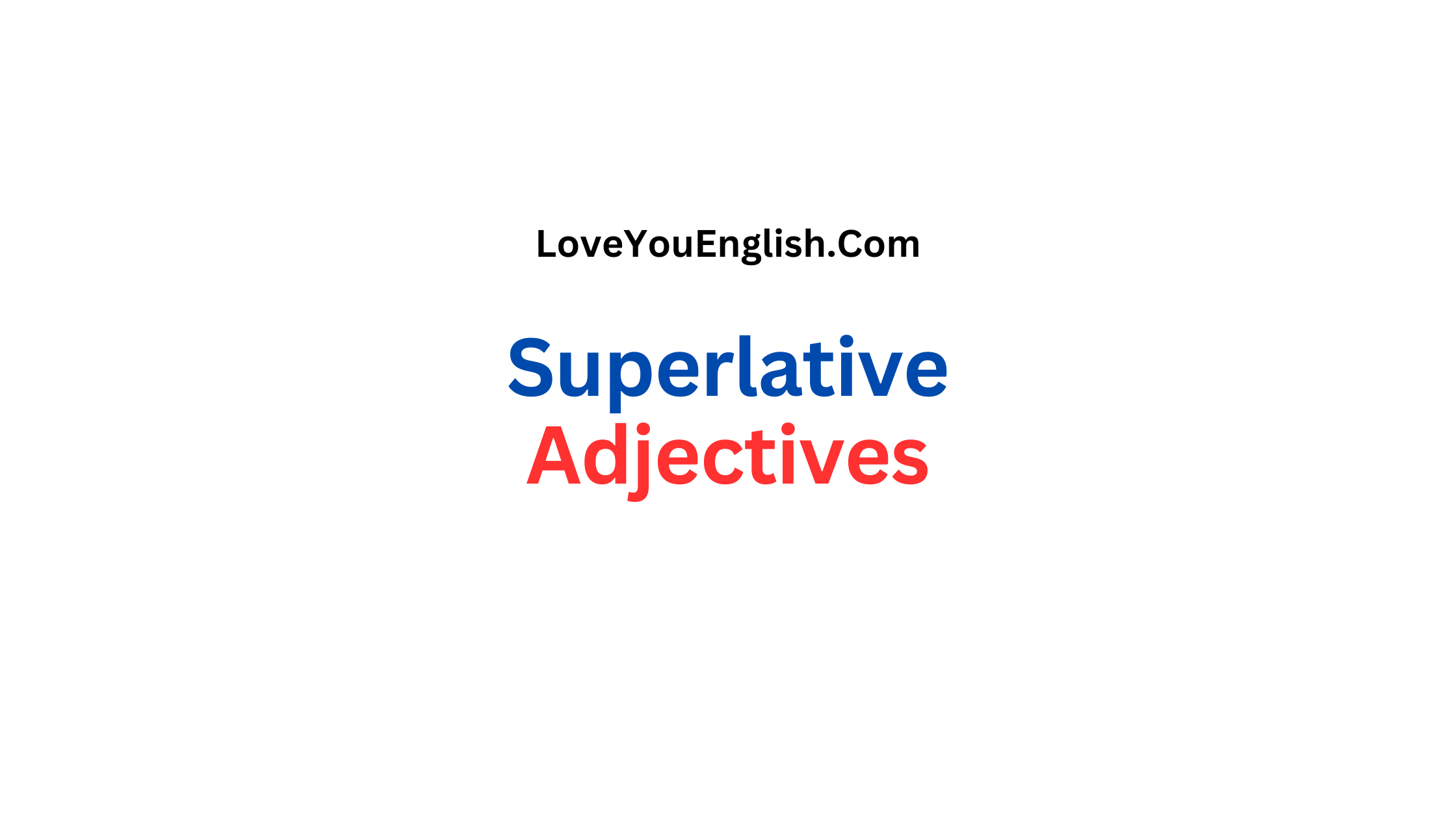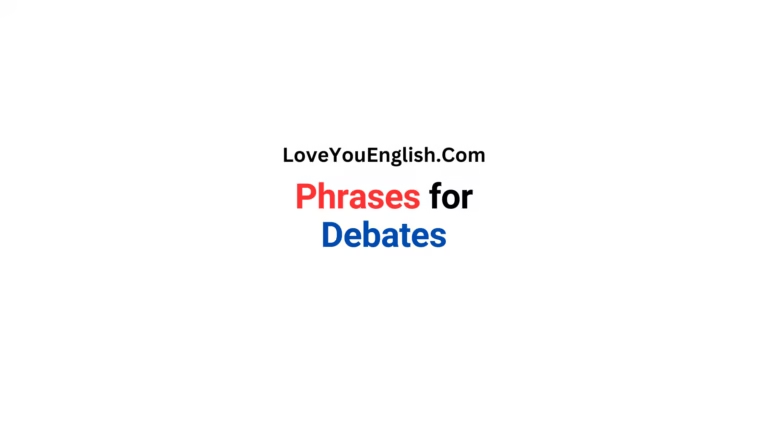What Are Superlative Adjectives? Definition and Examples
Have you ever wanted to describe something as the best, the smallest, or the most beautiful? You’ve likely used superlative adjectives without even realizing it!
Superlative adjectives are words that help us show the extreme or highest degree of something. In this post, I’ll tell you what superlative adjectives are, how to use them, and explore some examples that make them easy to understand.
What Is a Superlative Adjective?
A superlative adjective is a type of adjective used to compare three or more things. It expresses the highest or lowest degree of a quality. In simpler terms, superlative adjectives describe something that is the best, the worst, the tallest, the smallest, and so on.
For example:
- Tall becomes tallest in the superlative form.
- Beautiful becomes most beautiful.
- Big becomes biggest.
Superlatives help us emphasize how one thing stands out when compared to others. For instance, if you are comparing three mountains, you might say, “Mount Everest is the highest mountain in the world.” Here, “highest” is the superlative form of “high.”
How Do Superlative Adjectives Work?
In English, there are two main ways to form superlative adjectives:
Adding “-est” to the adjective:
- This rule generally applies to one-syllable adjectives and some two-syllable adjectives that end in -y.
Examples:
-
- Tall → Tallest
- Fast → Fastest
- Happy → Happiest
Using “most” or “least” before the adjective:
- This rule is for adjectives with two or more syllables that don’t follow the “-est” rule.
Examples:
-
- Beautiful → Most beautiful
- Interesting → Most interesting
- Expensive → Most expensive
- Difficult → Most difficult
Common Rules for Forming Superlative Adjectives
Here are some general rules that can help you form superlatives correctly:
One-syllable adjectives: Add “-est.”
-
- Small → Smallest
- Fast → Fastest
Two-syllable adjectives ending in -y: Change “y” to “i” and add “-est.”
-
- Happy → Happiest
- Funny → Funniest
Adjectives with two or more syllables (not ending in -y): Use “most” or “least.”
-
- Beautiful → Most beautiful
- Comfortable → Most comfortable
Irregular superlative adjectives: Some adjectives don’t follow the regular rules.
-
- Good → Best
- Bad → Worst
- Far → Farthest or Farther
Examples of Superlative Adjectives
Let’s explore some examples to make things clearer:
- Tall → Tallest: She is the tallest girl in the class.
- Fast → Fastest: Usain Bolt is the fastest runner in the world.
- Beautiful → Most beautiful: This is the most beautiful painting I have ever seen.
- Big → Biggest: The blue whale is the biggest animal in the ocean.
- Funny → Funniest: That was the funniest joke I’ve ever heard!
- Important → Most important: The most important thing in life is family.
Using Superlative Adjectives in Sentences
Superlative adjectives usually appear with the word “the” before them because they are referring to something unique or the extreme form of a quality.
For example:
- The tallest building in the city is the Empire State Building.
- The most expensive restaurant in town serves French cuisine.
- The best book I’ve read is To Kill a Mockingbird.
In these examples, “tallest,” “most expensive,” and “best” are superlative adjectives, and they are used with “the” to show that they are being compared to a group of things.
More Superlative Adjective Examples
To give you a better idea, here are more superlative adjectives used in sentences:
- Largest: Mount Everest is the largest mountain in the world.
- Most difficult: This was the most difficult exam I’ve ever taken.
- Most popular: Harry Potter is the most popular book series in the world.
- Oldest: The oldest tree in the forest is over 100 years old.
- Longest: The Nile River is the longest river in the world.
How to Use Superlative Adjectives in Different Situations
Superlative adjectives can be used in many contexts. Let’s see how they can be used in daily life:
1. Talking About People
You can use superlatives to talk about people’s qualities. For example:
- She is the most talented singer in the competition.
- He is the best soccer player in the league.
2. Describing Places
Superlative adjectives are often used to talk about places. For example:
- Paris is the most romantic city in the world.
- The Sahara Desert is the largest desert on Earth.
3. Talking About Objects
Superlatives are also common when comparing objects. For example:
- This is the most expensive phone I’ve ever bought.
- That’s the oldest book in the library.
4. Expressing Preferences
Superlative adjectives are useful when expressing your opinions. For example:
- Chocolate is the best flavor of ice cream.
- That was the worst movie I’ve ever watched.
Why Are Superlative Adjectives Important?
Superlative adjectives are important because they allow us to highlight the extreme qualities of something. Whether we’re discussing a person, an object, a place, or an experience, superlatives help make our descriptions more vivid and impactful. They add emphasis and help us convey our thoughts more effectively.
Common Mistakes with Superlative Adjectives
Here are some common mistakes to watch out for when using superlative adjectives:
Incorrect Use of “More” or “Most”
-
- Don’t say: “She is the more smartest student.”
- Correct: “She is the smartest student.”
- When using superlative adjectives, you don’t need “more” or “most” with adjectives that already follow the “-est” rule.
Using “The” Incorrectly
-
- Don’t say: “He is best student.”
- Correct: “He is the best student.”
- Superlatives always need “the” before them.
Irregular Forms
-
- Don’t say: “He is the goodest player.”
- Correct: “He is the best player.”
Conclusion
Superlative adjectives are a key part of our language, helping us to describe things that stand out in a unique or extreme way. By using them correctly, we can make our speech and writing more powerful and engaging. Remember the basic rules for forming superlatives, and practice using them to enhance your vocabulary. Whether you’re describing people, places, things, or experiences, superlative adjectives will help you communicate with clarity and emphasis. So, go ahead, use superlative adjectives, and add that extra sparkle to your descriptions!
FAQs
1. What is a superlative adjective?
A superlative adjective describes the highest or lowest degree of a quality when comparing three or more things. Examples: tallest, most beautiful, best.
2. How do I form superlative adjectives?
-
One-syllable adjectives: Add -est (e.g., fast → fastest).
-
Two-syllable adjectives ending in -y: Change y to i and add -est (e.g., happy → happiest).
-
Other adjectives with two or more syllables: Use most or least (e.g., interesting → most interesting).
-
Irregular adjectives: Learn their forms (e.g., good → best, bad → worst).
3. Should I use “the” with superlative adjectives?
Yes. Superlatives usually need the because they refer to something unique. Example: She is the tallest girl in the class.
4. Can I use superlatives with only two things?
Technically, superlatives compare three or more things. When comparing two things, use the comparative form (e.g., taller, more beautiful).
5. What are some common mistakes with superlatives?
-
Don’t say “more tallest” — just use tallest.
-
Don’t forget the: “He is best student” → “He is the best student.”
-
Watch irregular forms: goodest → best, badest → worst.
6. Can I use superlatives in spoken English?
Absolutely! Superlatives are common in everyday conversation to express opinions or comparisons:
-
This is the most interesting movie I’ve ever seen.
-
He is the fastest runner in the school.
7. How do I know when to use “most” instead of adding “-est”?
Use most for adjectives with two or more syllables (except some ending in -y). Example: beautiful → most beautiful.
8. Are there exceptions to the rules?
Yes, irregular adjectives don’t follow the regular rules, and some two-syllable adjectives can use either -est or most. Practice and exposure will help you learn them naturally.
9. Why are superlative adjectives important?
They make your speech and writing more descriptive and expressive, allowing you to highlight the extreme qualities of people, places, objects, or experiences.
10. How can I practice superlative adjectives?
-
Compare three or more things in your daily life.
-
Write sentences using superlatives about people, places, or objects.
-
Read English texts and notice how superlatives are used.
More topics:
- Silent Letters in English Words
- 100 English Question Tag Examples
- How to Use Prefixes and Suffixes to Expand Your Vocabulary
- Contractions in English Grammar: A Simple Guide for Everyone






